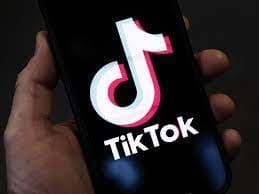
The ban on Tiktok in India after tensions between the two countries rose in a conflict at Galwan valley came with a price of its own. While Facebook and its subsidiary apps are the keystones of the contemporary social media experience, apps like Tiktok give a platform to those without the social capital to make it big, especially with Facebook’s algorithm working against them. Since its launch in 2016, Tiktok’s popularity kept rising in India - the app had more than 1.5 billion downloads by 2020. However, the democratization of such a medium was probably the unique thing about TikTok. The app offered individuals from economically backward, caste marginal- ized communities who don’t usually have access to spaces on the internet an opportunity to create content. This allowed these communities to participate in online cultures whose narratives they are usually excluded from. Just as this space for marginalized communities was being established and they began carving themselves a niche in online communities, the Indian Government imposed a ban on 59 Chinese-owned apps, one of which was TikTok. This came as a great blow to content creators from disadvantaged communities. TikTok had been the ideal platform for their requirements. Fifteen-second short- form video content was feasible for them to record and post as it required lower internet bandwidth than competing long-form video platforms such as YouTube. This enabled anyone with a smartphone and a basic internet connection with the same opportunities to post content as someone with high-tech editing software would have. The ban took away a means of self-expression and representation that marginalized communities rarely ever get. Although the space left by TikTok was filled by Facebook’s short-form video alternative Instagram Reels, it was simply not as inclusive as TikTok. Content on reels is saturated with influencers from communities that already have the social capital to make it big on these spaces. Instagram content promotes more of an aspirational lifestyle that the middle class hopes to achieve. Now, instead of a platform that allows disadvantaged communities the catharsis that making content based on their everyday lives brings, the content that has become popular is more so about what is out of their reach. Post the ban; many people took to social media such as Twitter with disapproval towards the move. However, the problem comes up when upper-class, upper-caste content creators from TikTok, who at one point would criticize content made by the working class creators as “cheap” and “mediocre”, now come to their defense, claiming to feel empathy for their plight. Such hypocrisy makes it apparent how their efforts towards giving a platform to marginalized voices are performative at best and there isn’t much concern over what the loss of such a platform could mean for these communities. As time goes by, the hope for another platform that lets people from all strata of society creates content on an equal footing increases. Unfortunately, with the contemporary political environment in mind, the possibility of it happening diminishes simultaneously.
10 Jan 2022
Yukta Patwardhan